Faculty Spotlight: Jessika Edgar, Assistant Professor in Ceramics
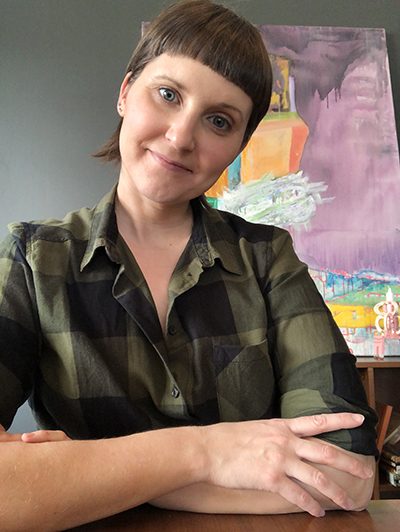
Assistant Professor Jessika Edgar is the Area Coordinator of Ceramics. She joined the Art Department faculty in Fall 2018, after working for five years as Assistant Professor and Ceramics Area Head in the Department of Art at New Mexico State University. She has a BA and MA in Art from California State University Northridge and an MFA in Ceramics from Cranbrook Academy of Art. She is passionate about guiding students to find their own creative voices and is building a mindfulness practice to help inspire new work while getting through COVID.
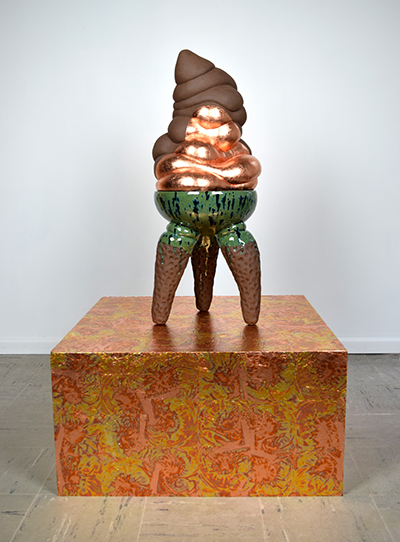
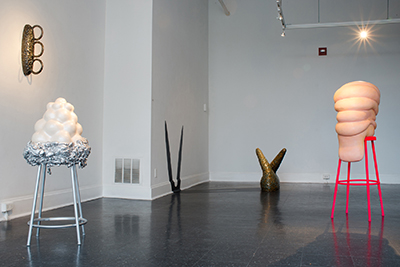
Teaching Art: Finding the Balance of Freedom and Guidance
When it comes to teaching, Jessika often draws from her own experiences as a student. "I always wanted to be a teacher," says Jessika. " I paid attention to what my professors were saying and how they were teaching classes. I thought about the way that I was learning and about how I wanted to be taught." She feels that a great learning experience comes from a balance of guidance and freedom, and a sense of community in the classroom. "I had a lot of freedom as a student and sometimes it felt like too much freedom," she explains. "But a lot of that freedom was based on peer learning. As an educator I try to find that balance for my students, allowing that kind of peer-group community to develop in the classroom while also providing structure and guidance."
Jessika wants to help her students find their own autonomy and creative drive. "So much of learning is self-driven," she believes. "I often think that undergraduate students feel like they are there for somebody else or some other reason besides educating themselves. I try to set up my courses in a way where learning and development are the focus. For me this is about exposing the students to a range of ideas, techniques, or opportunities that they might be interested in and encouraging them to pursue those things further."
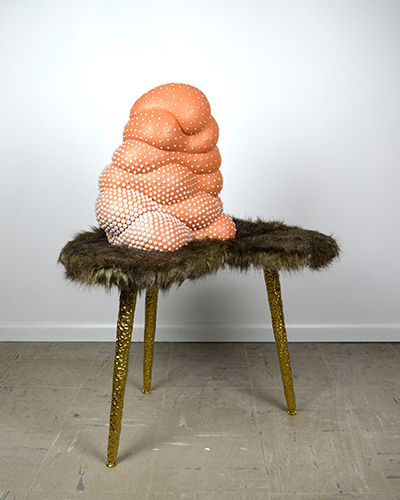
Practicing Mindfulness During Covid
As a contemporary ceramicist, Jessika works on large sculptures that reflect contemporary social and cultural topics. "All of my work deals with identity and the female body, contemporary culture and media, and consumerism." she explains. Her process involves looking at magazines and runway shows and other pop cultural media - and indulgence that she often relishes - but it also involves stepping away from media in order to fully reflect on her place as an artist within it. Through meditation and yoga, followed by drawing and sketching, Jessika is about to tap into her subconscious and identify new sculptural forms.
Prior to COVID, Jessika had planned to participate in a meditation retreat at a Buddhist center as part of her creative process. However, with residencies and retreats on hold for now, Jessika practices mindfulness through yoga and meditation. "COVID has put me in this interesting place," she explains, "where I am reflecting on my existence while in my suburban home, separated from everything that is happening in the world. I am thinking about what is happening in my life and the pressures of society and the media and how I am feeling relative to everything that is going on. The combination of meditation and movement is a way to get into a headspace where I can step back and reflect on the everyday."
After being forced to take a six month break from working because of campus closures, Jessika is now assessing what she was making before COVID. She is exploring Surrealism and abstraction, but also working to incorporate themes explored in Retro Futurism. "In the time that we are living in, there is a push and pull within a community that always wants to connect back to how things were versus thinking about what the future can offer."
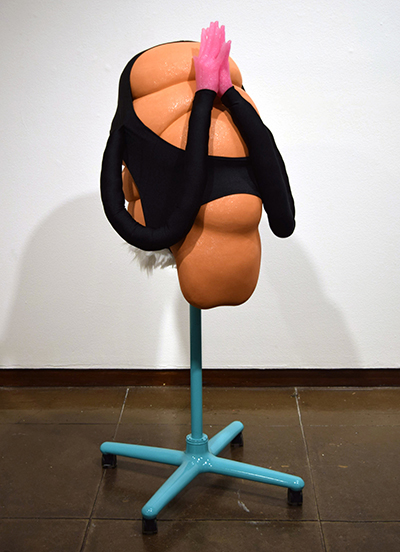
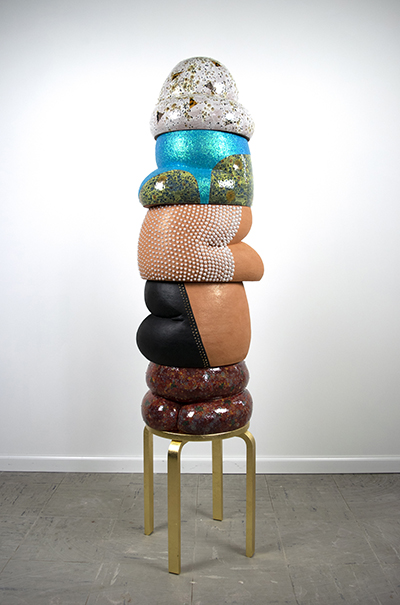
Finding New Ways to Teach During Covid
Jessika has devoted a tremendous amount of time and energy to rethink ceramics instruction for virtual/distance learning. She sees virtual instruction as a way for her students to dive into aspects of artistic practice that often get sidelined in a studio classroom. "Students are doing more writing on contemporary issues in ceramics like our impact on the environment or emerging digital practices- things that we wouldn't be able to cover in a normal semester in the studio. In a studio, you are so focused on the making because you are in the space where the making is happening - it doesn't always warrant that kind of conversation or discourse."
She also uses social media platforms to engage her students in building a sense of community. For example, she has her Intro to Ceramics students post a new artist each week on Instagram as a way to create a network of artists and find inspiration. Her intermediate and advanced classes curated an online exhibition where they were responsible for identifying a theme, writing a curatorial statement, and contacting artists that fit the theme. They then posted images of the works, tagged the artists, and did a writeup about each artist. "I am making networking less intimidating and I tell my students that this is your community- your peer group," she explains. "The connections that you make could last you your entire career."
Jessika is also finding innovative ways for her students to create work at home. Her intro students use a low-fire red clay that is pre-bagged and easy to transport. She pays careful attention when instructing her students on making ceramics from home - a potentially messy process. "I show the students how to set up a workspace and clean their tools without clogging the sink! I teach them to work on drywall as a work surface that can move with them anywhere. I think it is hard for some of them to find spaces- some work in the basement, some on the floor, some in the kitchen."
Live and recorded demos - taken from multiple angles - have been a critical way for Jessika to ensure that her students are successful. "The students enjoy the live demos because they can ask questions- they know it is not just some prerecording. In some ways they are getting better demos because they can go back to it, but also because they are getting a top view and a front view.."
While some aspects of online instruction are working well, Jessika misses the informal interactions that happen in the studio classroom. "One thing that I really miss is that I am not there to see my students make mistakes or be able to run across the room and say 'Hey, don't do it that way- here's another way.' That's the biggest thing that is lost in the way that we are learning right now." However, she sees ways to apply these new instructional methods to improve the learning experience for students in the future. "I think we can provide a better balance of providing flexibility for students to come into the studio when they want to be working in the studio. It would be nice to give structure for the students that need that structure every week, and then more flexibility to the students that don't."
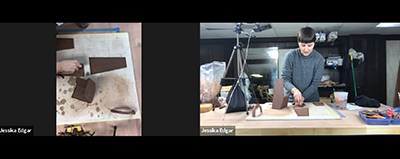
On Diversity and Inclusion
In addition to COVID, Jessika is thinking deeply about Black Lives Matter and issues of Diversity, Equity, and Inclusion in the field of ceramics. "I don't think that the ceramics community has done a good job at being diverse and inclusive," she explains. "There are contemporary ceramic histories that exist beyond white America and it is hard to find that information. There is a reckoning happening right now and there isn't enough focus on a greater diversity of contemporary ceramicists of color and critical commentary of their work. I want to be a part of this change and I want to figure out how to do that."
See more of Jessika's students' work at:
Instagram for WayneStateCeramics: @waynestateceramics
Instagram for students' online exhibition: @interpretations_of_home